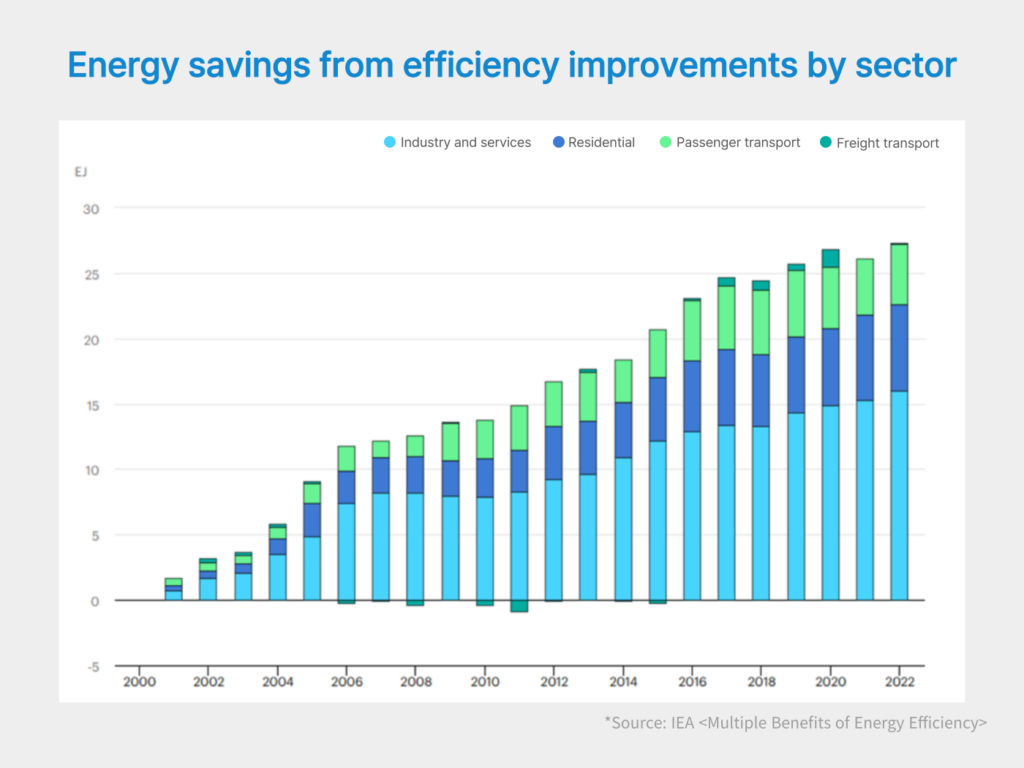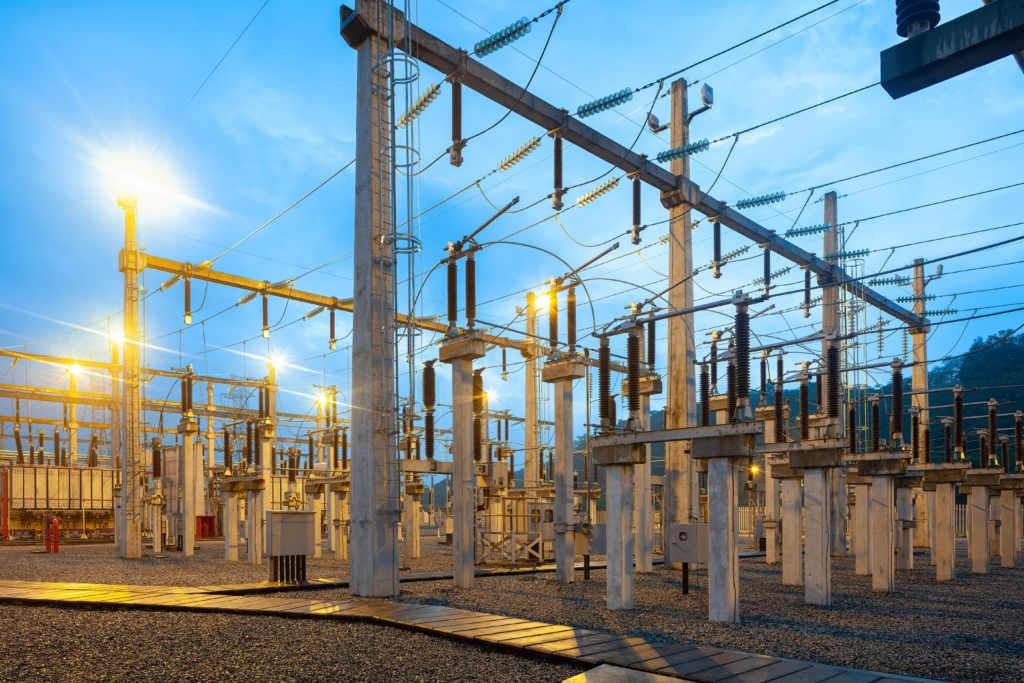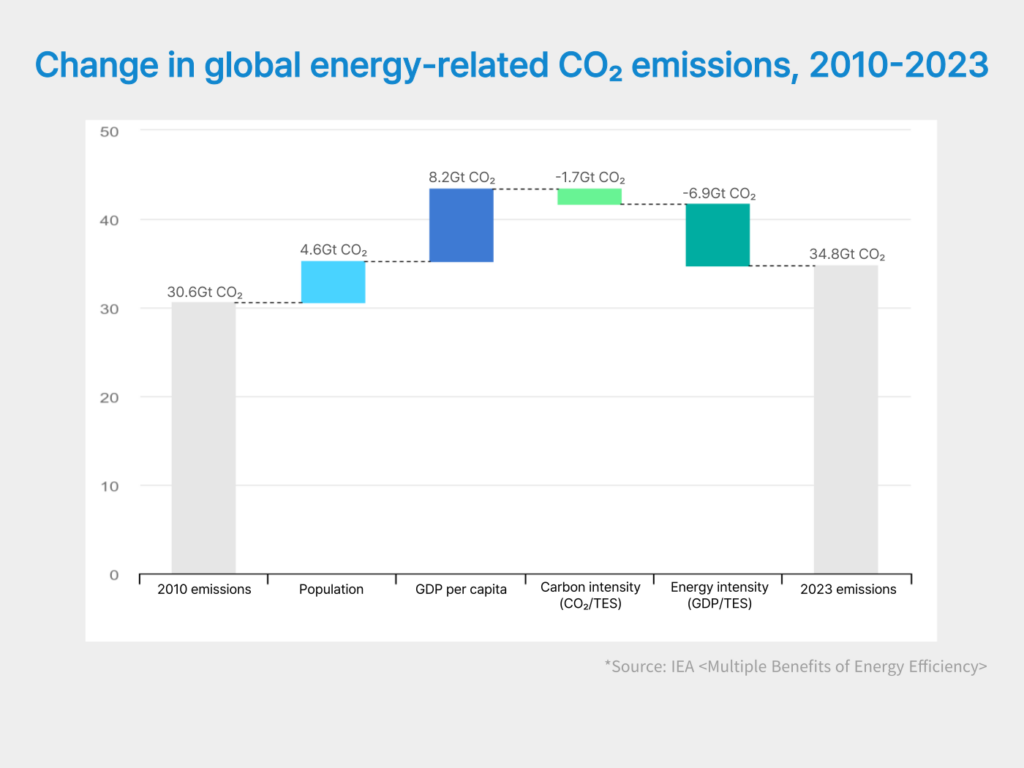Energy Efficiency and Its Ripple Effects Beyond Savings
2025.08.22
August 22 is recognized as Energy Day in Korea. Established during the peak of summer, when electricity demand reaches its highest, the day encourages citizens to switch off lights and adopt energy-saving practices as a reminder of energy’s importance. Yet today, with the pressing challenges of climate change, industrial competitiveness, and energy security, simple conservation is no longer enough.
What we need is energy efficiency—achieving greater results with the same resources. Energy efficiency extends far beyond cost savings; it reduces greenhouse gas emissions, strengthens industrial competitiveness, and transforms entire systems through technological innovation and policy. The International Energy Agency (IEA), in its June 2025 report Multiple Benefits of Energy Efficiency, underscored this, noting how efficiency fuels economic growth, cuts emissions, enhances competitiveness, and improves public health and well-being.
This article looks at the wide-ranging benefits of energy efficiency and how it can help build a more sustainable future.

Efficiency That Creates More Value
According to the IEA, improvements in energy efficiency over the past two decades have saved about 27 exajoules (EJ) of energy across member countries. This is equivalent to roughly 20% of total final energy demand. These savings highlight efficiency’s transformative role in reshaping economies, proving that industrial output and living standards can grow while using fewer resources.

- Industry & Services: More than 50% of the savings came from these sectors, as efficiency gains offset rising production.
- Residential: About 25% of the savings were from households. Even with larger homes and more construction, efficiency improvements outpaced demand growth.
- Transport: Passenger transport contributed around one-sixth of the savings, while freight transport remained limited at about 1%.
Energy efficiency is not confined to a single sector. It is a core driver of change across industry, homes, and transport, and remains the most practical path to achieve both economic growth and better quality of life while building a foundation for sustainability.
From Cost Savings to Industrial Competitiveness
Improving energy efficiency not only reduces costs, streamlines operations, and enhances product value at the corporate level, but also strengthens industrial competitiveness at the national scale. Globally, industries now generate about 20% more value with the same amount of energy compared to 2000. In the EU, manufacturing delivers 50% more value while using 25% less energy.
For businesses, energy management is essentially operational innovation. By adopting efficiency strategies, companies can reduce costs by 10% within three years and up to 60% over the long term. Each dollar saved on energy creates additional value through higher productivity, better resource utilization, improved system reliability, and safer working environments.
1) Higher Productivity: Improved equipment utilization and process efficiency lower production costs while enhancing product quality and consistency.
2) Optimized Resources: Fewer unplanned shutdowns and less downtime reduce maintenance costs and improve worker safety.
3) Waste Reduction: Reduced consumption of raw materials and water lightens environmental impact and supports sustainable operations.
A study of 3,300 U.S. small and mid-sized firms (2002–2024) found that direct energy savings alone reduced costs by an average of 40%, with a payback period of about three years. When additional benefits such as productivity gains and safety improvements were included, the payback period dropped to less than 1.5 years. This confirms that investing in energy efficiency is a high-return strategy that enhances both financial and non-financial performance.
Strengthening the Foundations of Energy Security
Energy efficiency is one of the fastest and most effective ways to enhance energy security. Over the past 20 years, improvements in efficiency have enabled IEA member countries to cut fossil fuel imports by about 20%, helping shield their economies from global market volatility. Japan’s strict fuel economy standards greatly reduced oil imports, while the EU lowered its dependence on natural gas through industrial efficiency gains.
Efficiency also plays a direct role in stabilizing power systems. In India, for instance, the widespread adoption of high-efficiency cooling systems could reduce peak electricity demand by up to 20% by 2030, significantly lowering the risk of blackouts during extreme heat. In this way, efficiency serves both as a buffer against supply disruptions and as a safety net that strengthens the resilience of national energy systems.

The Most Reliable Path to Carbon Neutrality
Energy efficiency is a cornerstone of reducing greenhouse gas emissions. Between 2010 and 2023, efficiency improvements alone cut global CO₂ emissions by 7 gigatons (Gt), equal to about 20% of total 2023 emissions. Few individual measures have achieved such a significant impact.

The IEA projects that by 2030, efficiency improvements could account for one-third of global reduction targets, a larger share than any other single measure. Unlike renewable energy expansion or CCUS (carbon capture, utilization, and storage), which are long-term strategies, efficiency provides immediate and cost-effective results.
Efficiency also improves air quality and public health by reducing particulate matter (PM2.5) and nitrogen oxides (NOx), lowering the risks of respiratory illness and premature death. In this sense, energy efficiency stands out as the most practical and impactful pathway to carbon neutrality, delivering benefits for both people and the planet.
Catalysts: Unlocking the True Value of Energy Efficiency
Achieving the same results with less energy is the essence of efficiency, and catalysts are the key enabler. By accelerating chemical reactions and minimizing unwanted byproducts, catalysts reduce both fuel consumption and emissions.
- Industry: Catalysts enhance efficiency and product quality in refining, petrochemicals, pharmaceuticals, and polymers. Hydrogen production catalysts (De-Sulfur, Reforming, WGS, PROX, CPOX) and ammonia cracking catalysts support clean hydrogen supply while cutting CO₂ and N₂O emissions.
- Power Generation: Environmental catalysts help clean emissions from power plants and industrial facilities. SCR, MOC, and AOC catalysts maintain high activity even at low temperatures, reducing NOx, methane, VOCs, and other pollutants, including powerful greenhouse gases such as N₂O.
- Transportation: Automotive and marine catalysts improve both fuel efficiency and emissions control. TWC and GPF are used in gasoline engines, while DOC, DPF, LNT, and SCR are applied in diesel engines. For LNG- and ammonia-powered ships, catalysts reduce methane slip and NOx emissions, supporting the growth of next-generation eco-friendly shipping.
- Clean Energy: Fuel cell and electrolyzer catalysts boost efficiency and durability across the hydrogen value chain. PEMFC and PAFC catalysts provide high power density and long lifetimes, while PEMWE and AEMWE catalysts enable efficient hydrogen production with lower energy consumption.
Conclusion: Heesung Catalysts’ Commitment
As we have seen, energy efficiency delivers far-reaching benefits, from cost savings and enhanced competitiveness to stronger energy security and lower emissions. It is more than a short-term measure of conservation; it builds the foundation for long-term growth and offers practical solutions to today’s most urgent energy and environmental challenges.
At Heesung Catalysts, we are dedicated to turning energy efficiency into measurable results. Backed by decades of research and hands-on expertise, we provide catalyst solutions that not only boost efficiency but also strengthen the competitiveness of our customers’ industries and unlock new opportunities in the energy transition. Our goal is to be more than a technology supplier—we strive to be a trusted partner in creating a sustainable and competitive future together.


